方案详情文
智能文字提取功能测试中
氨基酸在许多反应的活性中起着至关重要的作用。在溶液中,氨基酸R基团的性质决定了肽和蛋白质的结构-功能关系。亲水性氨基酸通常存在于蛋白质的外部以及酶活性蛋白质的活性中心。正是氨基酸R基团使酶反应得以发生。同样重要的是血红蛋白中的组氨酸缓冲红细胞中碳酸电离产生的H+离子的能力。正是血红蛋白的这种特性使其能够分别在组织或肺部交换O2和CO2。氨基酸中的芳香族R基团吸收紫外光,其吸收最大值在280nm范围内。蛋白质吸收紫外线的能力主要是由于色氨酸的存在,色氨酸强烈吸收紫外线。本说明将描述使用HPLC的氨基酸手性检测。Application Note 2/3Detection of Amino Acids Using HPLC with CD Detection Detection of Amino Acids Using HPLC with CD Detection Amino acids are often described as the “building blocks” of the body. Besides building cells and repairing tissue, they form antibodies to combat bacteria and viruses; they are also part of the enzyme & hormonal system; build nucleoproteins (RNA & DNA); carry oxygen throughout the body and participate in muscular activity. The twenty naturally occurring amino acids that comprise proteins are almost all of the L- form. The L (Levorotatory) form is the stereoisomer that rotates plane polarized light to the left . One method to detect amino acids and determine their stereochemistry is with HPLC. Int r oduction An asymmetric carbon atom can be described as having chirality. Chiral m olecules have the ability to rotate t he plane of po l ar i zed light either to the right (dextrorotatory) or to the left (levorotatory). All the amino acids found in prote i ns exhibit the same absolute steric configuration. There f ore, they are all L -amino acids. D-amino ac i ds are not found in proteins, although they exist in nature and are found in polypeptide antibiotics. Pepti d es and polypeptides are polymers of alpha-amino acids. There are 20 a-ami n o acids that are relevant to the make-up of mammalian proteins. Several other amino acids are found in the body, free or in combined states (i .e. not associated with peptides or proteins). These non-protein associated amino acids perform specialized functions. Several of the amino acids found in proteins also serve functions distinc t from the formation of peptides and proteins , e.g., tyrosine in the formation of thyroid hormones or glutamate as a neurotransmitter. Jasco HPLC System Amino acids play a crucial role i n the act i vity of many react i ons. In solution, i t is the nature of the amino acid R-groups that dictate structure-funct i on r ela t ionships o f peptides and proteins.The hydrophilic amin o acids are generally found on the exter i or o f proteins as well as at t he act i ve centers of enzymatically active protei n s.It is the ami n o acid R-groups that allow enzyme reactions to occur. Equally important i s the ability of hi s t i dines in hemoglobin to buffer the H+ ions from carbonic acid ionization in red blood cells. It is this property of hemoglobin that allows it to exchange O2 and CO2 in the t issues or lungs, respectively. The aromatic R-groups in amino acids absorb ultraviolet light with an absorbance maximum i n t he range o f 280nm.The ab i lity of proteins to absorb ultraviolet light is pred o minantly due to the presence of the tryptophan which strongly absorbs ultraviolet light . This note will describe chiral detection of amino acids using HPLC. Table 1. The Ami n o Acids Amino Acid Symbol pK1 (COOH) pK2 (NH2) Glycine Gly-G 2.4 9.8 Alanine Ala-A 2.4 9.9 Valine Val-V 2.2 9.7 Leucine Leu-L 2.3 9.7 Serine Ser-S 2.2 9.2 Threonine Thr-T 2.1 9.1 Cysteine Cys-C 1.9 10.8 Methionine Met-M 2.1 9.3 Aspartic Acid Asp-D 2.0 9.9 Asparagine Asn-N 2.1 8.8 Glutamic Acid Glu-E 2.1 9.5 Glutamine Gln-Q 2.2 9.1 Arginine Arg-R 1.8 9.0 Lysine Lys-K 2.2 9.2 Histidine His-H 1.8 9.2 Phenylalanine Phe-F 2 2.2 9.2 Tyrosine Tyr-Y 2.2 9.1 lryptophan Trp-W 2.4 9.4 Proline Trp-W 2.0 10.6 Several amino acids were examined using a J ASCO HPLC system with a CD-2095 c i rcular dichroism detector. The separation was made with a CROWNPAK CR (+) (4.0 mm l .D. x150 mm/L) column. The eluent was HCIO4 wi t h flow rates of 0.4 -0.8mL/min. The column temperature varied from 0-25℃ with an injec t ion volume of 10 pL (2 m g/mL, 20 pg). Amino acids were also separated following precolumn derivatization with DABS-CI. For these a CrestPak C18S column was used with a mixture of : A) 8mM Sodium dihydrogenphosphate dihydrate in H,O with 4% DMF , and B): ACN. Temperature was 40℃, injection volume 10 ul and a flow rate 1 mL/min. The gradient is shown below. Time (min) A(%) B(%) 0 85 15 9 70 30 14 59 41 16 49 51 18 46 54 23 10 90 Figure 2. HPLC separation of Lys a n d Arg. Figure 1. HPLC separat i on of Pro, Ser , Thr,and Cys ami n o acids (top to bottom ). Figures 1 an d 2 show the HPLC separation of prol i ne, ser i ne, threonine, cysteine, l ysine and arginine with precolumn der i vatization. Each of the compounds evaluated had both a positive and negative peak in the CD spectrum confirming the presence of both enantiomers. In the case of molecules like isoleucine (not shown)which have 2 chiral centers, two separate sets of peaks are found, one set for each chiral center . The separation of cysteine, proline, histidine, leucine, threoni n e, and phenanthroline was made following precolumn derivatization with DABS-CI. In these cases pre-derivatization is required for detec t ion of the isomers because a chiral column was not used. Figure 3. Sepa r ation of Cyste i ne wi t h DABS-CL. Figures 3 and 4 sh o w the separ a tion of cysteine and proline. Derivatization allows for a more complete separation and sharpens the peaks. Regardless of whether the peaks are separated with a chiral column or with precolumn derivat i zation, the CD-2095 detector can offer sensitive and selective detection of chiral compounds such as amino acids .
关闭-
1/3
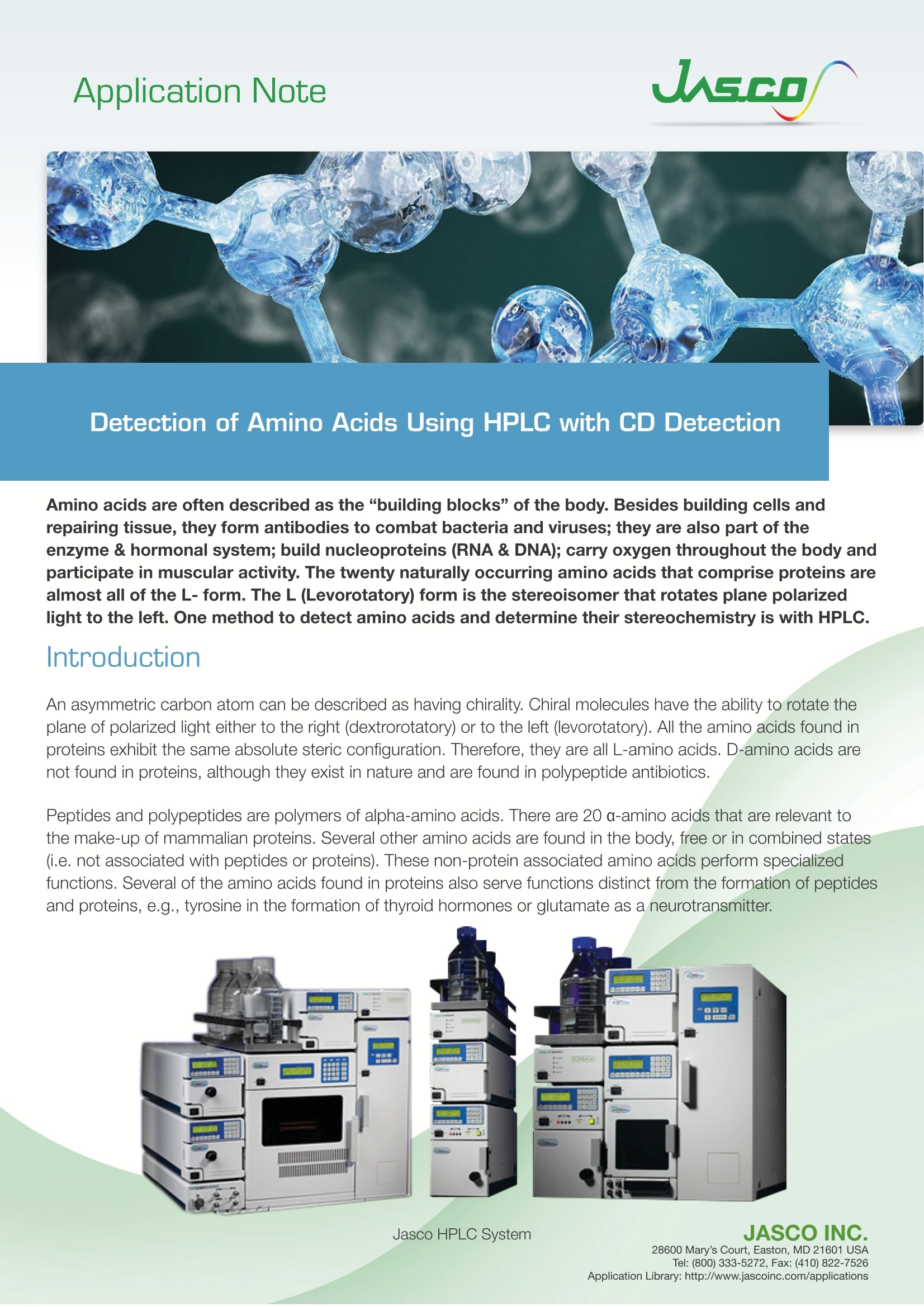
-
2/3
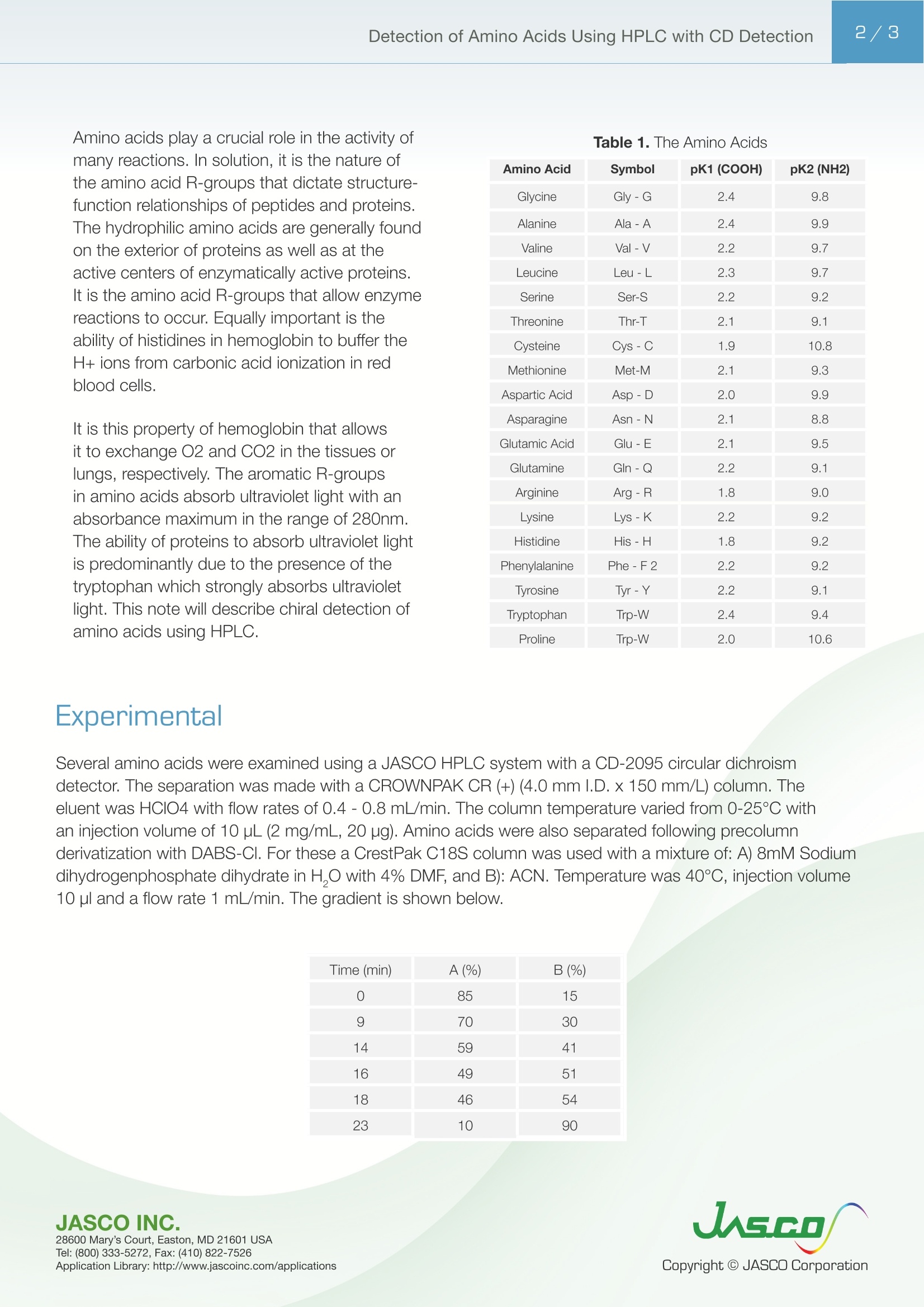
还剩1页未读,是否继续阅读?
继续免费阅读全文产品配置单
佳士科商贸有限公司为您提供《高效液相色谱CD检测法检测氨基酸》,该方案主要用于其他中氨基酸、检测、分析检测,参考标准《暂无》,《高效液相色谱CD检测法检测氨基酸》用到的仪器有JASCO高效色谱仪LC-4000、JASCO圆二色光谱仪CD J-1500。
我要纠错
推荐专场
相关方案


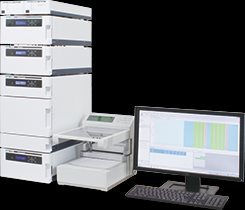

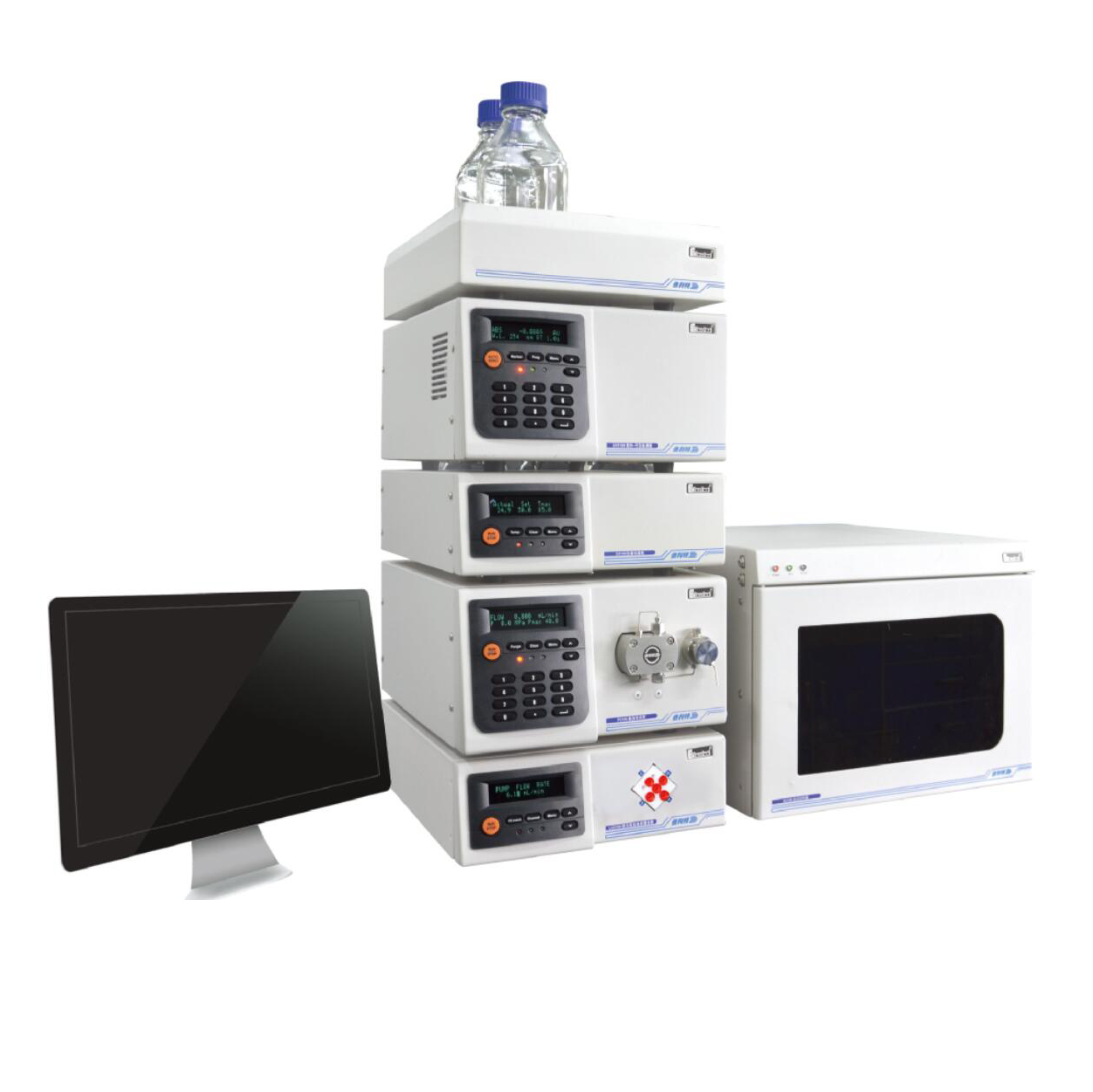
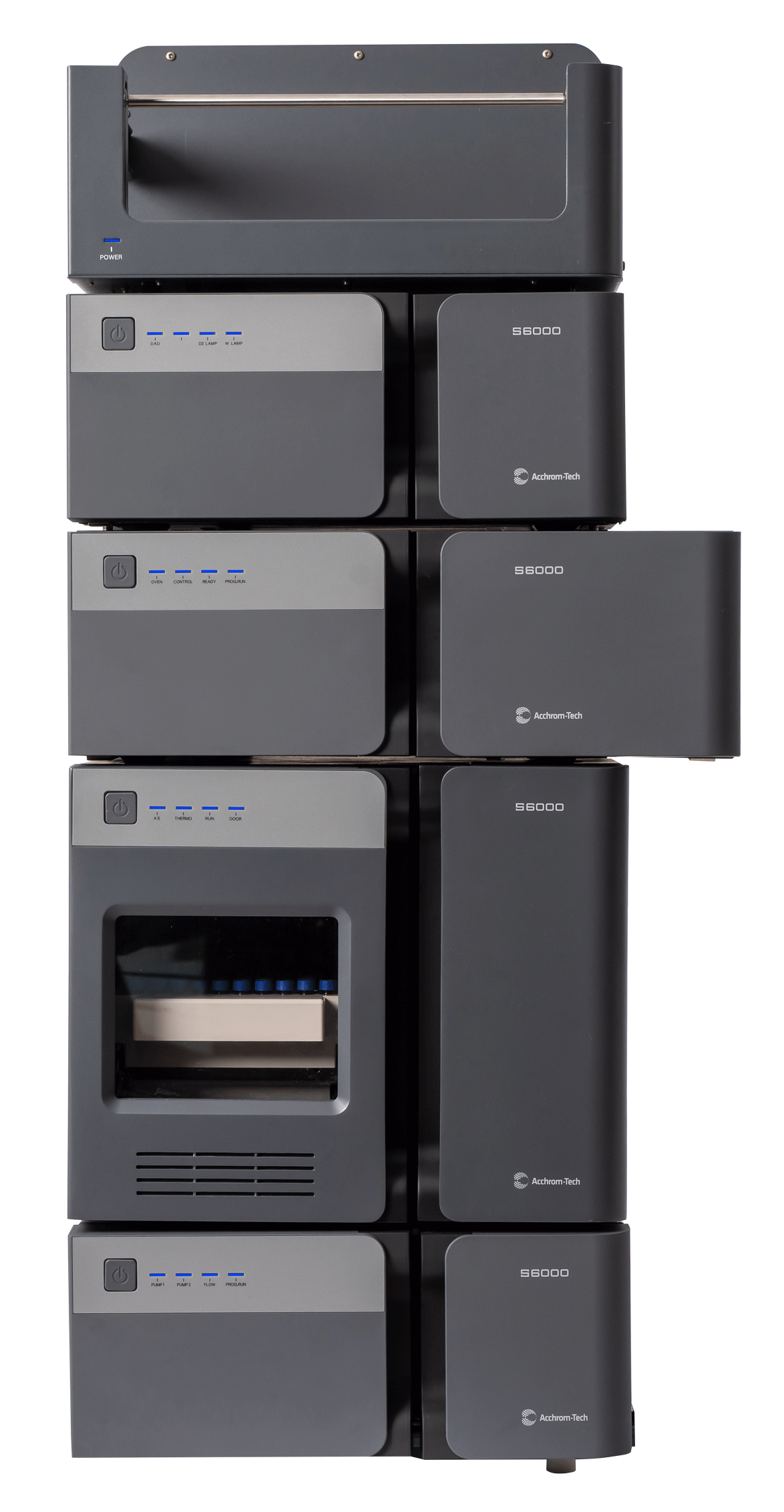
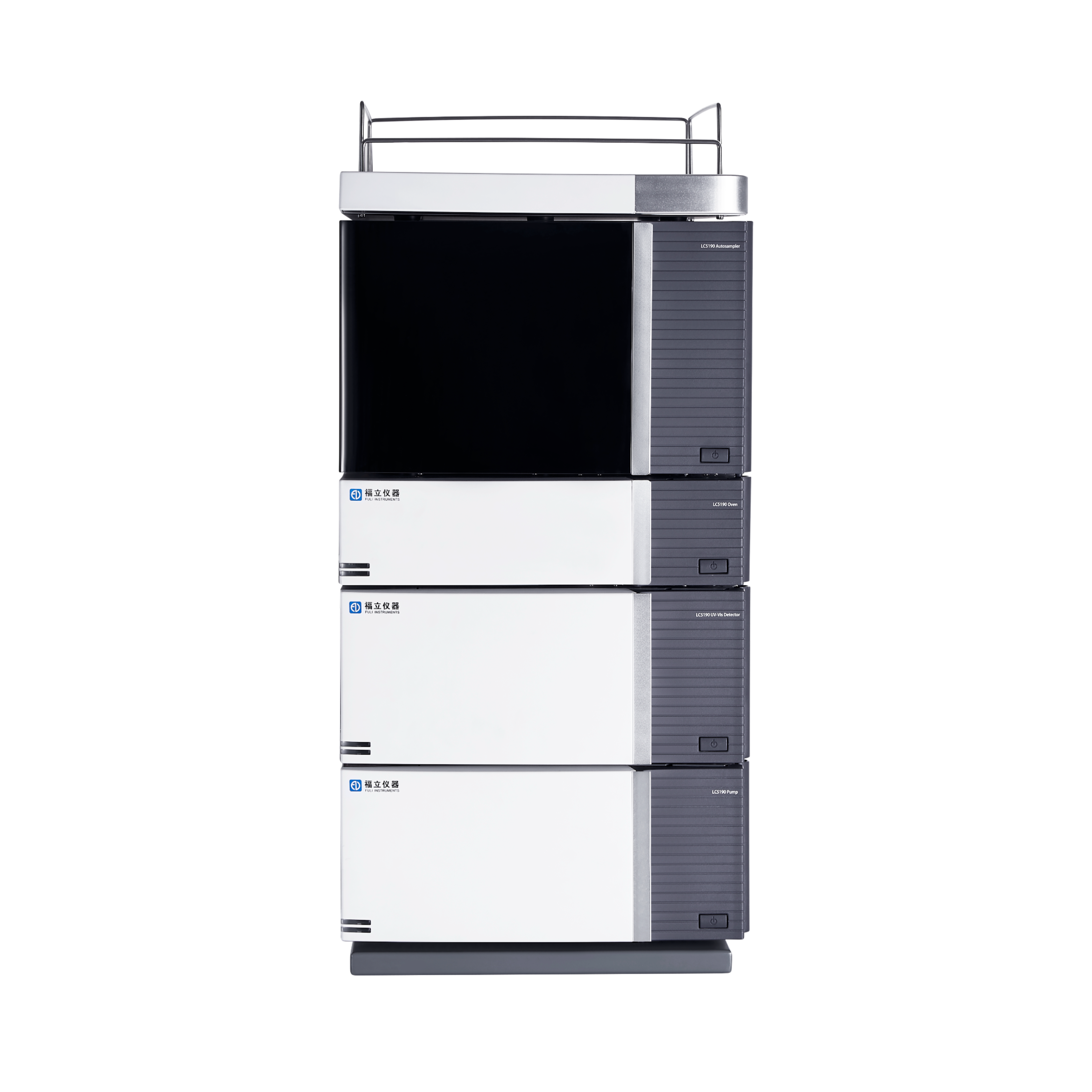
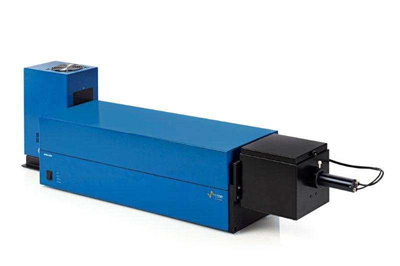

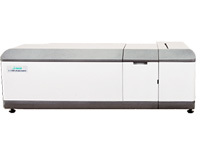
 咨询
咨询